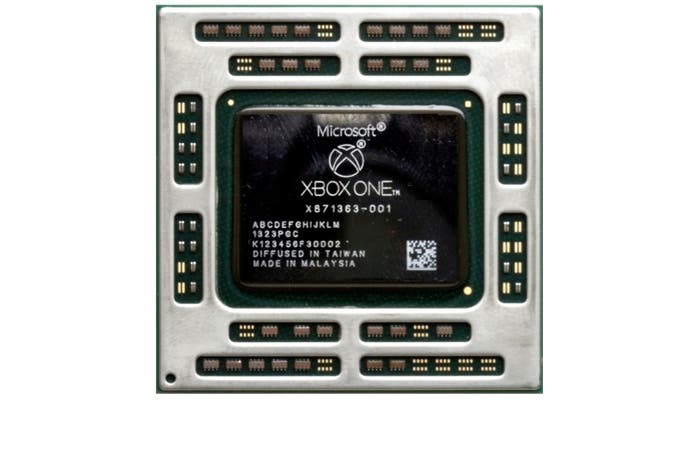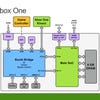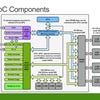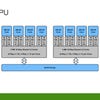Xbox One CPU speed increased by 9.375 per cent
1.6GHz processor bumped up to 1.75GHz in production hardware.
Microsoft has revealed that the Xbox One final production hardware features a 9.375 per cent increase to CPU speed, with the eight-core AMD processor now running at 1.75GHz - 150MHz faster than the beta hardware.
The speed bump was revealed by Yusuf Mehdi, corporate vice president of marketing and strategy for Microsoft's Interactive Entertainment Business, speaking at the Citi Global Technology Conference.
"We're on track for launch in November," Mehdi revealed. "We'll announce a launch date shortly. We recently just went into full production, so we're now producing en masse Xbox One consoles. We've had real good progress on the system. In fact, we just updated the CPU performance to 1.75GHz on top of the graphics performance improvement, so the system is really going to shine... The games look pretty incredible."
The news follows a similar announcement on system performance last month, where Microsoft revealed that the Xbox One's graphics chip had received a 53MHz boost to clock speed, offering up an additional 6.62 per cent of performance.
"This is the time where we've gone from the theory of how the hardware works - what do we think the yield is going to look like, what is the thermal envelope, how do things come together - to really having them in our hands," corporate president Marc Whitten said. "That's the time where you start tweaking the knobs. Either your theory was right dead on, or you were a little too conservative, or you were a little too aggressive. It's actually been really good news for us, and an example of that is we've tweaked up the clock speed on our GPU from 800MHz to 853MHz."
"The big surprise at the recent Hot Chips 25 presentation was the reveal of an additional 8GB of NAND storage in Xbox One. Our sources tell us that games developers have no access to it - suggesting it's for the OS and apps."
Now it seems that additional overhead was found once Microsoft got its hand on production silicon, with the CPU component able to run at 1.75GHz, compared to the initial 1.6GHz target. The speed increase to both major elements of the Xbox One processor is a further nail in the coffin of the theory that Microsoft had problems with its yield - the amount of useable chips that come off the production line.
Increasing speeds typically causes the yield to drop, and can cause problems with heat owing to the additional power draw. According to Anandtech's analysis of the Jaguar CPU hardware utilised by the next-gen consoles, a 25 per cent boost to CPU speed results in a 66 per cent increase in power consumption and 1.6GHz - the clock speed for PlayStation 4 - is thought to be the sweet spot in terms of performance per watt for the architecture. The fact that Microsoft has managed to extract that extra performance speaks to the efficiency of the console's cooling assembly and internal airflow. Similar performance increases with PlayStation 4 are unlikely owing to the much smaller casing.
Further information on the technological make-up of the Xbox One's processor were revealed last week at Hot Chips 25, hosted at Stanford University in California, where Microsoft's John Sell and Patrick O'Connor revealed that the chip does indeed feature five billion transistors incorporated into a 363mm2 die (in comparison, AMD's top-end Radeon HD 7970 graphics card features a 4.3-billion transistor chip with a 365mm2 die). Advanced power-saving reduces the juice consumed by the chip to just 2.5 per cent when it is in a standby state.
Most of the stats revealed in the presentation tie in closely with the white papers describing beta "Durango" hardware, previously revealed in the SuperDaE leaks, though there are some interesting new additions, such as a 30GB/s link from the CPU to the DDR3 RAM. In contrast, PlayStation 4 is believed to have 20GB/s access to the 8GB of GDDR5, while the graphics hardware has the full 176GB/s bandwidth available. We also see that the 32MB of ESRAM (embedded static RAM) used by Xbox One for accelerated GPU processing is actually a cluster of four 8MB modules, each with a 256-bit bus, operating in parallel to facilitate its wide bandwidth.
"It's clear that Microsoft was conservative in the creation of its Xbox One processor. Access to final hardware has allowed them to push the thermal envelope, resulting in a faster console."
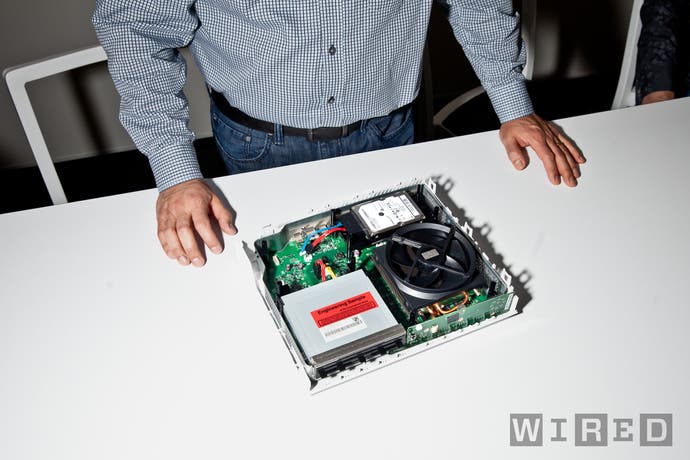
The combination of the CPU performance increase in combination with its cluster of custom "Data Move Engines" strongly suggests that while PlayStation 4 has an undoubted graphics hardware advantage, the Xbox One's CPU capabilities are a significant step ahead. Audio-wise, Microsoft's hardware is also impressive, with DSP effects, mixing and other features effectively available for "free" to developers, where PS4's set-up only decodes compressed audio formats. It's understood that these hardware features are being incorporated into major middlewares, which potentially sees the audio burden on CPU reduced on Xbox One.
But perhaps the biggest surprise from the glut of information revealed at Hot Chips is the inclusion of 8GB of eMMC NAND memory, included in addition to the 500GB hard drive. This is the same sort of storage found in smartphones, Wii U and the 12GB PlayStation 3. Further details on how the memory is used were not forthcoming from Microsoft, but development sources tell us that they have no access to the NAND, all but confirming that the additional storage is used for the operating system and perhaps the apps that can run side-by-side with gameplay
Traditionally, a stronger graphics chip makes much more of an impact to overall performance in console architecture - a state of affairs borne out by Microsoft's own Xbox 360, and the approach taken by Sony with PlayStation 4, which also enjoys an overall bandwidth advantage from its unified pool of GDDR5 RAM. However, behind the scenes, the platform holder is adamant that Xbox One is highly competitive with its Sony rival while at the same time championing its multi-OS system as the means by which Xbox One will do things that no other games machine has done in the past - something we had a taste of at Gamescom a couple of weeks ago.
